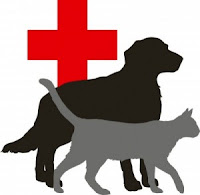Safety First
First and foremost, if the cat you plan to transition was previously stray, be absolutely sure to have him examined by a veterinarian, and discuss spaying or neutering before bringing him into your home. These cats should first be quarantined (with their own food, water, litter, resting areas and scratching post, etc.) from other pets in your home to avoid the potential spread of disease. This separation also helps acclimate the new cat to your home environment and to using a litter box. Your resident pets are dependent on your judgement and protection, so don't expose them to a new animal all of a sudden!
Prep Your Home
 If you don't currently have other pets or are new to being a cat owner, you should take some time to kitty-proof your home before allowing him to explore beyond his private quarters. A good rule of thumb is that anything unsafe for a toddler is unsafe for a cat. This includes poisonous plants like lilies, small objects (choking hazards), breakables and valuables, window blind cords and electrical cords. Preparing your home for the new cat will make the transition much safer for the cat and easier on you!
If you don't currently have other pets or are new to being a cat owner, you should take some time to kitty-proof your home before allowing him to explore beyond his private quarters. A good rule of thumb is that anything unsafe for a toddler is unsafe for a cat. This includes poisonous plants like lilies, small objects (choking hazards), breakables and valuables, window blind cords and electrical cords. Preparing your home for the new cat will make the transition much safer for the cat and easier on you!Make Introductions
Once your cat has been given a clean bill of health and appears to be comfortable in his own quarters, you can SLOWLY introduce him to your other pets. This can be a very stressful time; other pets may feel threatened and your home can become chaotic. Start by feeding your pets on opposite sides of a door or a baby gate. If this goes well, you can increase their exposure to one another little by little during mealtimes. Finally, let them see and smell each other, rub each other's faces if desired, and test the waters with verbalization. Throughout this process, be sure that there are plenty of litter boxes, toys, food and water bowls, etc. so that there is no need to compete. And if any aggressive behavior erupts, be ready to separate the pets and try again another day.
After the animals have been introduced, invite the human members of the house to slowly approach the new cat. If you have young children, supervise all interaction and prohibit any rough petting, tail-pulling or teasing. Cats are independent creatures, so it is best to let them decide when to seek out human attention rather than the reverse. After time, most cats will get cozy with you, each in his own way.
Keep It Interesting
 The last step of the transition is to provide lots of opportunities for the former outdoors-kitty to be mentally and physically stimulated. After having free reign, hunting and chasing, he will probably find indoor life to be a bit boring, so schedule time for one-on-one and solitary play, puzzle-solving, food-searching and critter videos.
The last step of the transition is to provide lots of opportunities for the former outdoors-kitty to be mentally and physically stimulated. After having free reign, hunting and chasing, he will probably find indoor life to be a bit boring, so schedule time for one-on-one and solitary play, puzzle-solving, food-searching and critter videos. Ease the Transition
 If the process is a bumpy one, you can try sprinkling/rubbing some feline facial pheromones on the cat(s). This decreases anxiety and the tendency to "mark" territory. Although many cats have been successfully transitioned to the indoors, some cats will inevitably prefer the stimulation that only the outdoors can provide. But ideally, your efforts will be rewarded, with your previously outdoor kitty wondering what life was even like before he became a happy housecat.
If the process is a bumpy one, you can try sprinkling/rubbing some feline facial pheromones on the cat(s). This decreases anxiety and the tendency to "mark" territory. Although many cats have been successfully transitioned to the indoors, some cats will inevitably prefer the stimulation that only the outdoors can provide. But ideally, your efforts will be rewarded, with your previously outdoor kitty wondering what life was even like before he became a happy housecat.














